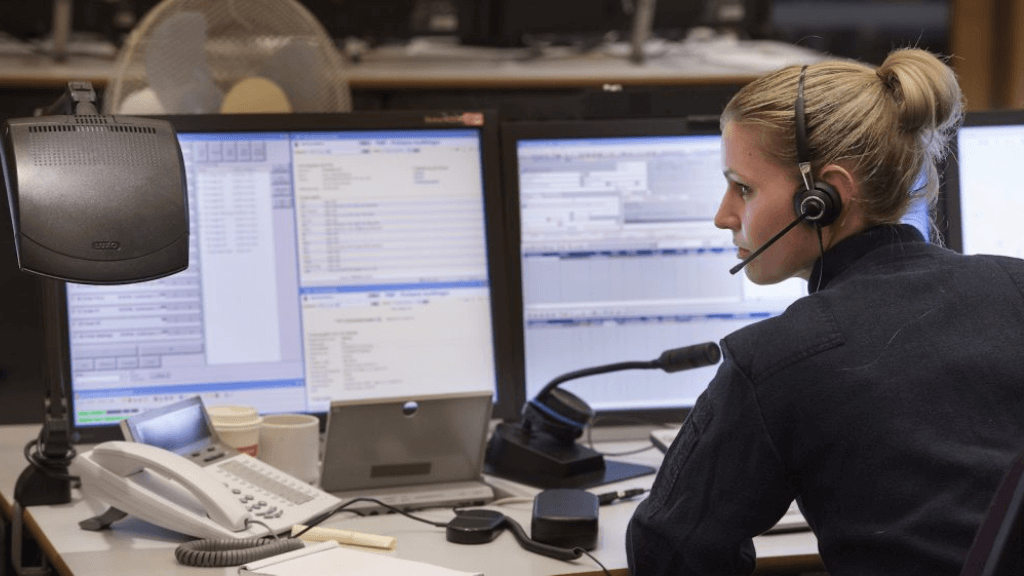The national Police Contact Center, PKC, and the National Phone Exchange, NTV, together process nearly five million calls made to 114 14 each year. Operations at these mission critical units is currently in a phase of extensive transformation. A transformation that aims for high quality in all contacts and is driven by both internal needs and decisions as well as external factors, with a changing world and the growing expectations of the public.
Quality can mean many things, but for stakeholders of 114 14 it can be simply expressed as giving callers the best possible help with available resources.
This is what Peter Magnusson, Police Commissioner and responsible for the nation-wide operations at PKC, tells us. For a few years now, a shift has been underway from a focus on simply answering calls quickly to more law enforcement capabilities and matching the right skills, or competences, to the needs of the person calling.
New organization with units working closer together
Much of the ongoing change began with the Swedish Police force reorganization started in 2015. As a result of this initiative, seven police regions were formed. Also, a new mission, clearly focusing on increased policing capabilities for PKC, was decided at the time. Previously, short response times were prioritized, but now more and more law enforcement capabilities are placed directly in PKC. As an example, operators can conduct parts of investigative work, such as holding certain types of interrogations and interviews. In this way, the Police use their resources more efficiently, while at the same time offering a better service to the public.
Currently, about 1,500 people, 250 of whom are police officers, work in the PKC. The organizational model involves close cooperation with the regional command centres, which respond to the emergency number 112. PKC also work closely with the National Telephone Exchange. NTV, which serves part of the contacts that arrive through 114 14. NTV provides services to citizens in, for example, passport matters and helps forward incoming calls to police employees all over the organization.
An initial distribution of calls between PKC and NTV is made in voice controlled IVR where the persons calling state their intent.
Specific requirements for systems supporting police operations
In parallel with creating efficient, working methods in the new organization, the Police have reviewed all systems and platforms that will support the new ways of working. There has been a strong focus om simplification to create a robust technology platform and to provide staff with an effective working environment. In addition to functional requirements the Police have special requirements for security and possibilities for adaptations, as they are a vital part of the country’s defense capabilities.
Technology to support collaboration
An example of how technology can support a flexible way of working with a contact center solution, is the ability to seamlessly create multi-party conversations with staff from different units within the Police. With this ability, it is possible to add more skills from any of the closely cooperating units to an ongoing conversation to solve a task here and now.
As an example, when calls are made to 114 14 that should really have gone to the emergency number112, the operator at PKC can quickly request assistance from the right regional command centre and they may dispatch resources to the scene. An ability that, in the long run, can save lives.
Conversely, regional command centres may request help from PKC for less urgent policing tasks, such as holding interrogations or collecting information on a case at a scheduled time.

An exciting future
Major changes and improvements have already been made, but Peter emphasizes that this is only the base for continued innovation and evolution. There are many exciting thoughts and possible areas to develop further for the future. The sights are set both on sharpening law enforcement capabilities and on increasing service further, sometimes inspired by the commercial world.
Integrations between different supporting systems will play an important role. For example, information about a caller’s geographic location can be added and mapped against data in other systems to create a more complete picture of the situation in real time.
Additional areas with development potential are scheduled calls and the possibility to use video in communication between the Police and members of the public.
We in the Telia ACE team are happy to be part of the Police’s exciting journey and hope to get the opportunity to return to them again here on the ACE blog.